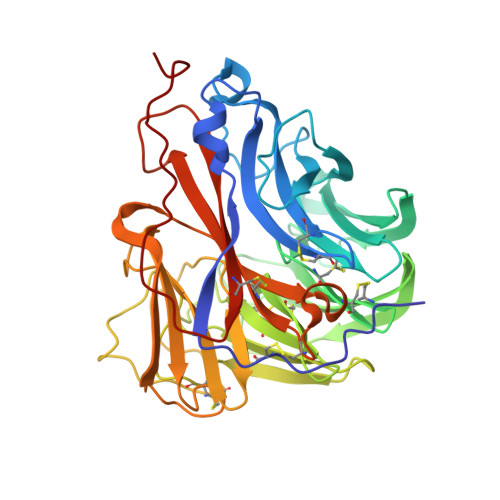Structural basis for a class of nanomolar influenza A neuraminidase inhibitors.
Kerry, P.S., Mohan, S., Russell, R.J.M., Bance, N., Niikura, M., Pinto, B.M.(2013) Sci Rep 3: 2871-2871
- PubMed: 24129600
- DOI: https://doi.org/10.1038/srep02871
- Primary Citation of Related Structures:
4KS1, 4KS2, 4KS3, 4KS4, 4KS5 - PubMed Abstract:
The influenza virus neuraminidase (NA) is essential for the virus life cycle. The rise of resistance mutations against current antiviral therapies has increased the need for the development of novel inhibitors. Recent efforts have targeted a cavity adjacent to the catalytic site (the 150-cavity) in addition to the primary catalytic subsite in order to increase specificity and reduce the likelihood of resistance. This study details structural and in vitro analyses of a class of inhibitors that bind uniquely in both subsites. Crystal structures of three inhibitors show occupation of the 150-cavity in two distinct and novel binding modes. We believe these are the first nanomolar inhibitors of NA to be characterized in this way. Furthermore, we show that one inhibitor, binding within the catalytic site, offers reduced susceptibility to known resistance mutations via increased flexibility of a pendant pentyloxy group and the ability to pivot about a strong hydrogen-bonding network.
Organizational Affiliation:
Biomedical Sciences Research Complex, University of St Andrews, St Andrews, Fife, KY16 9ST, UK.
















